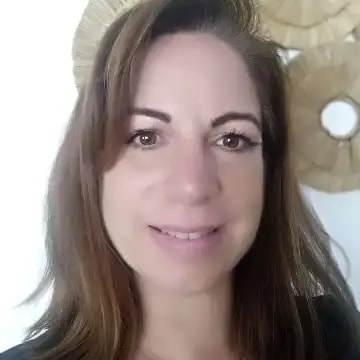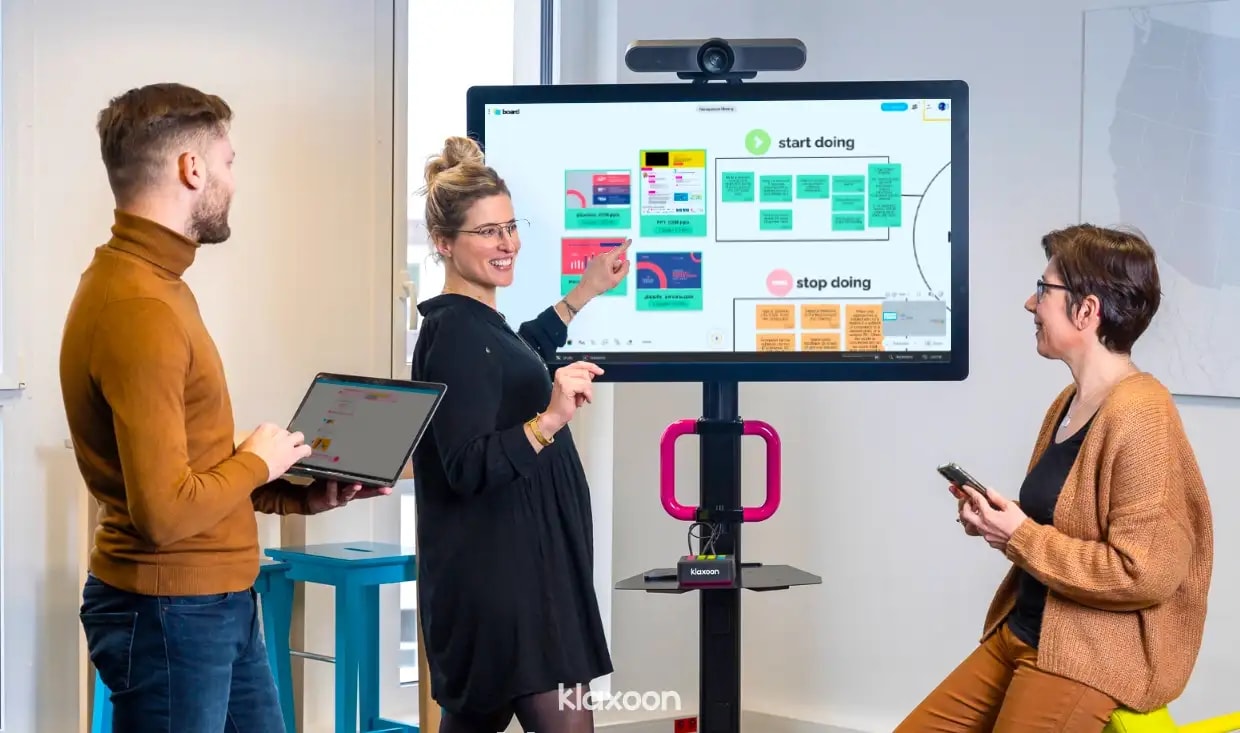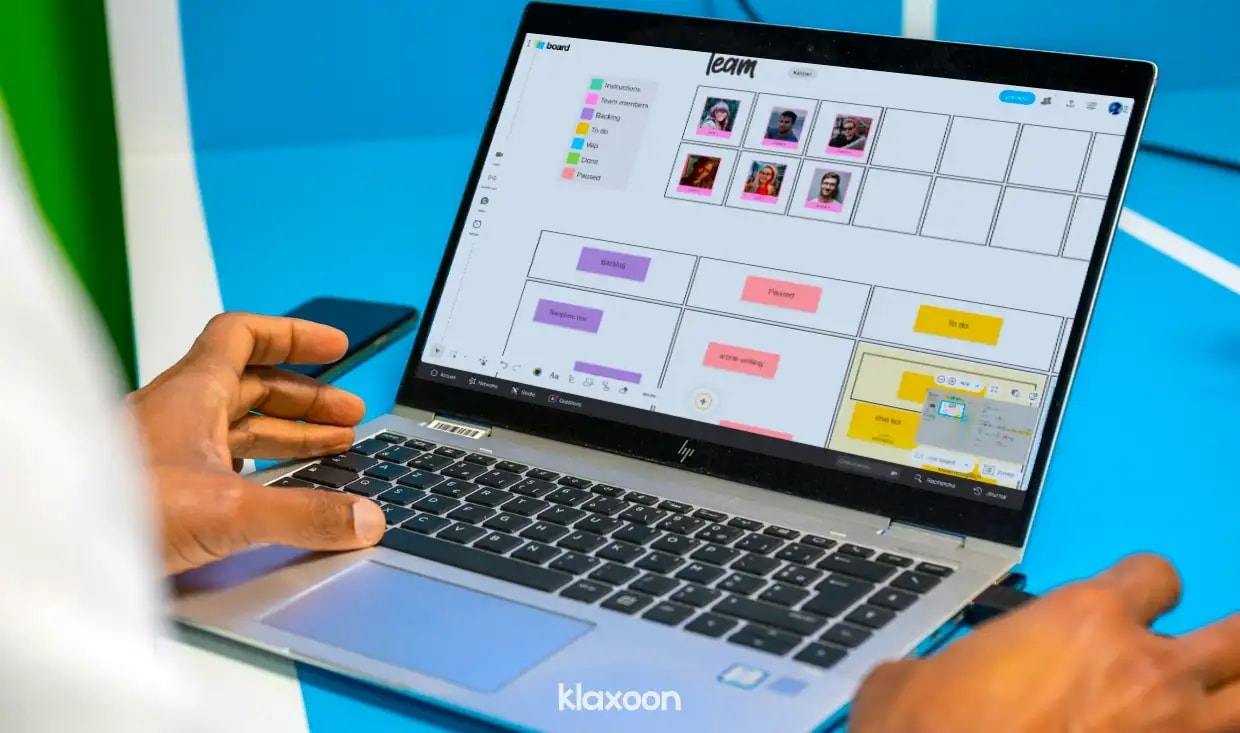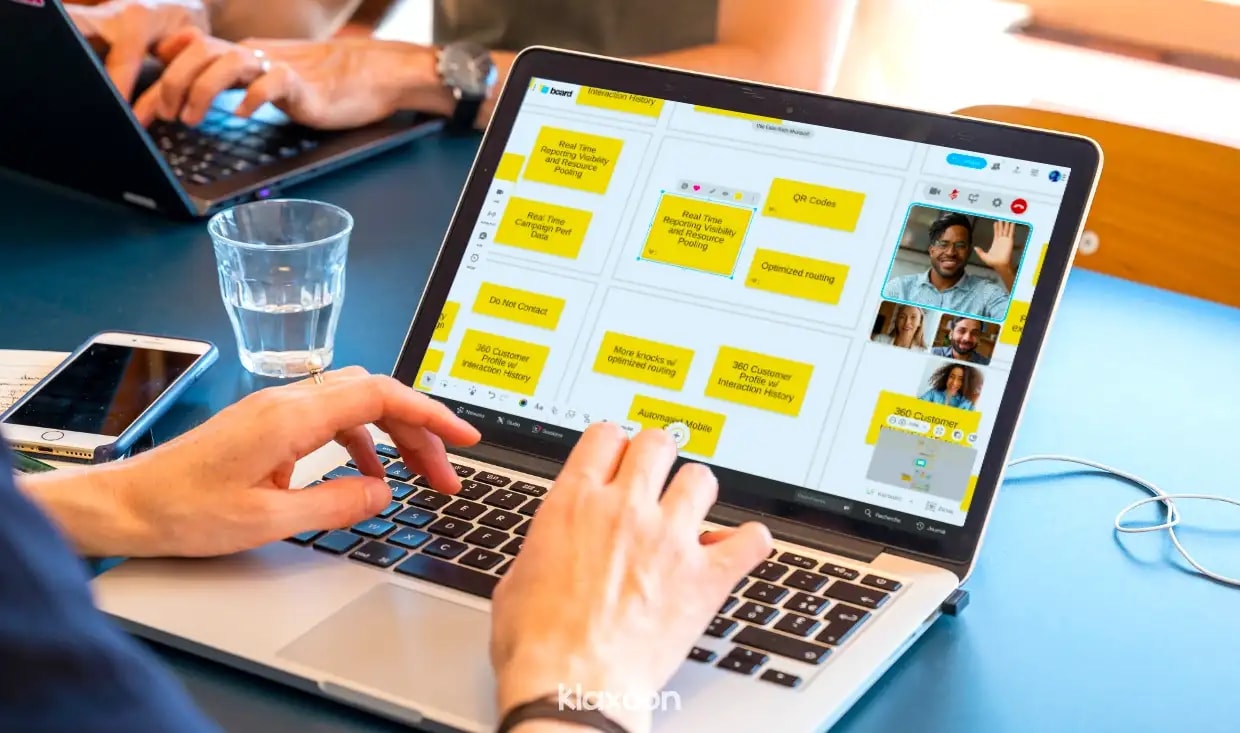How to save 40 man-days with effective agile team rituals
Published on February 14, 2025
How to save 40 man-days with effective agile team rituals

Release Train Engineer at iMSA
Émilie Canty is a Release Train Engineer at iMSA, an IT player for the French organization Mutualité Sociale Agricole. She works in the Software Infrastructure Department, which employs around a hundred people organized in an agile SAFe train (see Challenge below). Her role is to coordinate and support the train's collective efforts to optimize the delivery of value to users.
iMSA provides health, retirement and family services, with an information system spread over 35 funds and several sites in France.
On a daily basis, Émilie and her team work on a large scale using the SAFe agility framework, with a delivery cadence aligned to common train objectives.
A train is a fixed period of time, usually 3 months, during which several teams work together to produce consistent, high-quality functionality. A train enables efficient coordination and delivery of features, facilitates large-scale project management, and offers faster and more frequent feedback to teams on their work.
In 2021, due to health restrictions imposed by Covid, Émilie and her colleagues had to adapt quickly to remote working conditions, and find a solution to run their agile trains remotely and in hybrid mode.
They looked for a solution compatible with telecommuting, which would enable them to create a space for unlimited exchanges permitting a high level of team commitment. Émilie then found Klaxoon and was able to launch their first remote PI Planning.
With these new ways of working, the Klaxoon visual platform has become progressively integrated into the daily work routine of Émilie and her team. They use it for all stages of the agile train:
PI Planning is the first stage of the train, during which teams plan the objectives, functionalities and dependencies for the next incremental program (PI).
In Emilie's case, PI Planning takes place at the Montauban head office, every 3 months. It lasts 2 and a half days, and 100 people take part. Around 95% of participants attend face-to-face, while the remaining team members join the meeting remotely.
On the first day, the morning is devoted to a plenary session to present the business and product visions, with a presentation of the architecture and operating instructions. To do this, PowerPoint presentations are integrated beforehand into a Board, Klaxoon's visual whiteboard.


Board is compatible not only with PowerPoint files, but also with many other file formats.
Board is an infinite collaborative workspace that participants can join from any device, both in person and remotely, by connecting via the integrated videoconferencing tool. In just a few minutes, Émilie shares the PI Planning Board with all participants, who can connect to it simply by clicking on a link.
Teams then launch an energizing activity in the form of a quiz or icebreaker. The aim is to quickly engage participants, and put them at ease to interact effectively during the rest of the PI Planning session.
Then, each team (the train is made up of 8 BUILD agile teams and 3 RUN shared services) joins its own space within the Board, where there is a ready-to-use PI Planning template and a Program Board. There, the team gathers around a table for face-to-face participants, and connects by videoconference to Microsoft Teams if some are remote, while working on the same Board.
The second stage consists in building and organizing the train on the Board. Participants then add their ideas to the collaborative workspace, following a precise color code and layout:


With visual management, Board gives you a clear overview of your team exchanges.
At the same time, they set up synchronization points with the Product Owners (POs) and Scrum Masters to keep the teams informed. Émilie then exchanges with each team for 15 minutes, to answer questions, take note of sticking points, share dependencies...
At the end of the 2.5 days, a vote of confidence is organized, followed by a ROTI (Return On Time Invested). The purpose of this moment is to collect feedback from the participants, and to identify ways of improving efficiency together. Émilie and her teams do this using a Klaxoon Survey.
Once the train has started, Product Owners and Product Managers take part in this weekly one-hour meeting, to share progress on the sprint, top-down information, urgent matters, reports on production incidents, and the follow-up of actions that can be traced.
In PO Weekly, from one week to the next, one participant plays the role of facilitator and another is the time manager to energize the meeting. Information is organized according to its status:
This time of exchange considerably facilitates the management of dependencies between teams.
A daily meeting or "Team Sync" is a daily meeting between an agile coach and his team to discuss the work in progress, any problems, and the next steps to be taken. This meeting enables the coach to keep abreast of what team members are doing, to identify any obstacles that might be preventing them from progressing, and to offer advice.
A weekly Coach Sync is also held on Thursdays, with a space created for each meeting on a global Board.
Meetings begin with an icebreaker to kick off the discussion. This is followed by the agenda, and a review of everyone's attendance and role. The coaches then review actions and the vision for production launch.
At the same time, the Board presents a top-down section for discussion of other important issues. The Coach Sync' reports are also directly available, with the possibility of receiving feedback.
The "Inspect and Adapt" is an event that takes place at the end of the incremental program. It enables train members to reflect on the processes, practices and performance of the collective. The aim is to determine what has worked well and what could be improved.
For this event, Émilie and her team organize a 3-hour remote meeting, and take stock of the objectives set for the train. This time is also used to return to a form filled in asynchronously, which deals with the highlights and difficulties encountered during the increment.
Working asynchronously means that each participant fills in the form at his or her own pace, in advance of the meeting. This flexibility enables teams to better manage their time, and eliminates the need to systematically organize synchronous meetings with several dozen participants.
During the first 30 minutes of the Inspect & Adapt, the group takes stock of the improvement actions previously implemented, and discusses their progress.
They then carry out a positive and negative retrospective of what has been achieved over the past 3 months. The group then votes for topics to be taken further, using the Board's "like" feature. The ideas receiving the most votes are selected for further development.


You can simply highlight your favorite ideas by clicking on them and pressing the "like" button.
For each idea, participants organize a problem-solving workshop to which they volunteer to contribute. They use a problem-solving workshop construction method, to reach the final objective of proposing 2 successful actions.
Finally, the teams hold a general feedback meeting. This meeting is organized every 15 weeks at train level.
The team retrospective takes place at the end of each sprint. The aim is to enable each team to take a step back and identify the positive and negative points of the iteration, with a view to continuous improvement. The idea is to find ways of optimizing their collaboration, work processes and productivity for the next iteration.
Each team organizes its own retrospective at the end of the sprint. This is an opportunity to review what has been done, and to set out a vision for the next three weeks. This meeting lasts around 1h30, and brings together around 7 people per team.
For retrospectives, Émilie and her teams have access to a Klaxoon Network, with all the ready-to-use templates they need to personalize their meeting. At any time, all participants can access the Network and the templates it contains, and draw inspiration from them to prepare their next team retrospectives.
By centralizing all exchanges and iterations in a single space, the use of the Klaxoon platform enabled Émilie's teams to save 40 man-days of transcribing the 4 PI Planning sessions carried out over the year. What's more, the trace of exchanges is immediately accessible, so teams don't have to wait to move on to the next steps. Furthermore, a record of all exchanges is readily available, allowing teams to move forward with the subsequent stages of the project.
In this way, the work carried out on Klaxoon remains sustainable. Teams can come back to it, rework it and share it, whatever the need or the moment of the sprint.
Thanks to these agile team rituals, Émilie has also freed up time for her teams to work efficiently remotely and asynchronously. The time saved by short, regular synchronizations benefits the teams, who are no longer dispersed in meetings and have more time for their other missions.
With the Network feature, information and work models are easily shared in a space open to all, especially for retrospectives, which can be quickly prepared in advance. This helps to make cross-functional communication more fluid.
Finally, in her role as facilitator, Émilie has also appreciated the creativity enabled by the visual platform: there are no more space limits, fewer constraints, and participants can easily use it anytime, from anywhere.


Unlock your teamwork potential